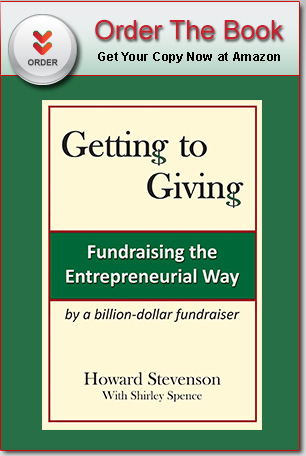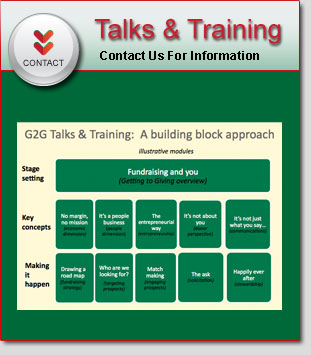1. People want to give but get waylaid. What can you do about that?
A friend of mine – who happens to be a generous donor as well as a successful fundraiser – made this observation: “There are more people with money looking for good ideas, than good ideas looking for money.”
He’s agreeing with you, I believe, that there are missed opportunities out there. Another friend – a development professional – would add that part of the fundraiser’s job is to educate potential donors about how to give as well as why to give to the cause you are championing.
I would reframe the question like this: What stops people from giving? Here are some things that I’ve seen:
- Not understanding how you can solve the problem they care about. The important assumption here is that you know what they care about! Do you? It’s not just about telling them about your organization; it’s about linking what you do with what they want to accomplish with their philanthropic dollars.
- Thinking that you don’t really need the money. “HBS? They shampoo the squirrels!” “NPR? They get Federal money.” Getting past these objections requires explaining the economics of the organization, to correct misperceptions (especially if you are a wealthy institution) and inaccuracies (the bulk of NPR revenues come from programming fees, grants, contributions and sponsorships).
- Concerns that the money will be mis-used or wasted. A friend recently forwarded me an email he had received about princely compensation packages at some nonprofits. This one is tricky, though. The United Way was one organization cited ($1.2 million and a Rolls Royce for the CEO, and 9 cents on the dollar to programs). It has issued a rebuttal (CEO gets $455 thousand and drives a 2007 Prius; 90 cents goes to help children). As a donor, you have to go directly to the source. Nonprofits, see point 2, above!
- Wondering whether the gift will be appreciated. “I can’t be a major donor,” some people think, “so why bother?” Sometimes, that is the message that development people themselves inadvertently send. I can’t stress two things enough: respect for all donors, and recognition that a gift may be significant for the giver, even if doesn’t have a lot of zeros attached. That means saying thank you, and treating the gift with respect, too. (The receipt for a gift that I made to one organization where I am a longtime – and significant – donor went to a thirteen year old address; I was not impressed.)
What can stop someone from giving? It comes down to a failure to address one or more of the four questions that a donor must implicitly say “yes” to, about your organization and cause: (1) are you doing important work? (2) Are you well managed? (3) Will my gift make a difference? And (4) will the experience be satisfying to me?
2. How is the landscape in philanthropy changing?
One big change is that organizations are thinking more about non-philanthropic forms of revenue. Funding your mission really is a three-legged stool: earned income, memberships, and philanthropy.
Mount Vernon, which encompasses George Washington’s estate, museum and gardens, is an interesting example. It was founded as a nonprofit in 1853 by Ann Pamela Cunningham, and is owned and maintained by the Mount Vernon Ladies Association of the Union. Its website proudly announces that it receives no government funding. It has some giving programs but its primary sources of revenues are from ticket sales, and its retail and dining facilities.
That said, a second change is that many more charities are looking for big donations, and launching not just one but multiple capital campaigns. Donors are getting swamped with requests. That’s not good news for nonprofits, and may well accelerate the trend towards seeking alternate funding sources.
A third trend is the increasing focus on philanthropy outside the U.S., partly driven by severe cutbacks in government support in many cash-strapped countries. In Europe, Asia and South America, the question is the same: what does philanthropy mean, in the context of our culture? People of means are asking themselves: how can I fulfill my aims through philanthropy? That may lead them to economic development or health care or education or a host of other worthy causes.



